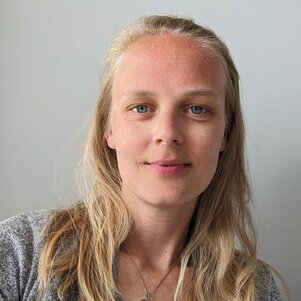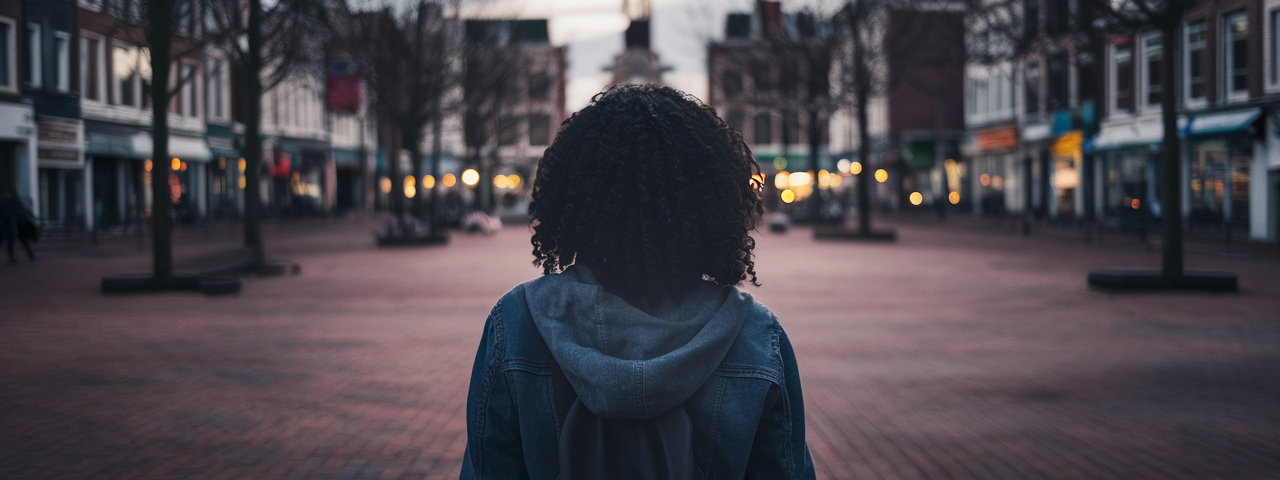"Urban design greatly influences the social life of residents. However, the future development of a city is usually decided by a select group. I became fascinated by the question of how to involve more people in this process," says Dr Geertje Slingerland of the Department of Urbanism, Faculty of Architecture and the Built Environment. She studied the perception of safety of young women (aged 12-18) in Rotterdam South, and how we can improve it through better design.
Young women are a challenging target group, certainly for urban planners and policymakers. Fortunately, Geertje has the necessary experience: "For my PhD, I connected with young people in Ireland. Then I worked with children in Rotterdam to research active lifestyles, and held workshops with 14-year-old girls on their leisure activities." In early 2023, she joined a consortium of colleagues from Hogeschool Inholland and Erasmus University. Together, they responded to a call from the organisation Kennisplaats Leefbare Wijken (Expertise Centre Livable Neighbourhoods). Young women are feeling unsafe in public spaces, but why exactly? And what can we do about it? The group was chosen to investigate those questions.
Street interviews by podcasters
The first task was to identify which factors influence the perception of safety. Based on the literature, the team came up with three categories. First, environment: how many people are around, who are they, what are the lines of sight, do you see cops or cameras. Second, society: gender norms, discrimination, media reports. And third, personal: do you know the area, what route do you take, do you use public transport, do you have sunglasses, keys, or even pepper spray? The team used street interviews to find out what young women in Rotterdam South consider important. To this end, they enlisted the help of Chicks & the City, a media platform and podcast by and for Rotterdam women and girls. Geertje: "They are more in tune with the target group, and also look more like them."
Their first reaction is that they do not feel unsafe. But when you keep the conversation going, a story to the contrary often emerges.
Geertje Slingerland
During the interviews, the young women mainly mentioned social factors as important for the perception of safety. For instance, there should be enough people around to supervise, but not so crowded that they lose overview of the situation. Interviewees prefer to be in a mixed crowd, with elderly, children, women, and service staff or shop employees. The conversations also revealed many anecdotes about undesirable behaviour and sexual harassment, and how they try to prevent it. Geertje was struck by how much she recognised: "Pretending to call when you feel unsafe, or taking a longer route to avoid alleys... I think all women are familiar with such strategies."
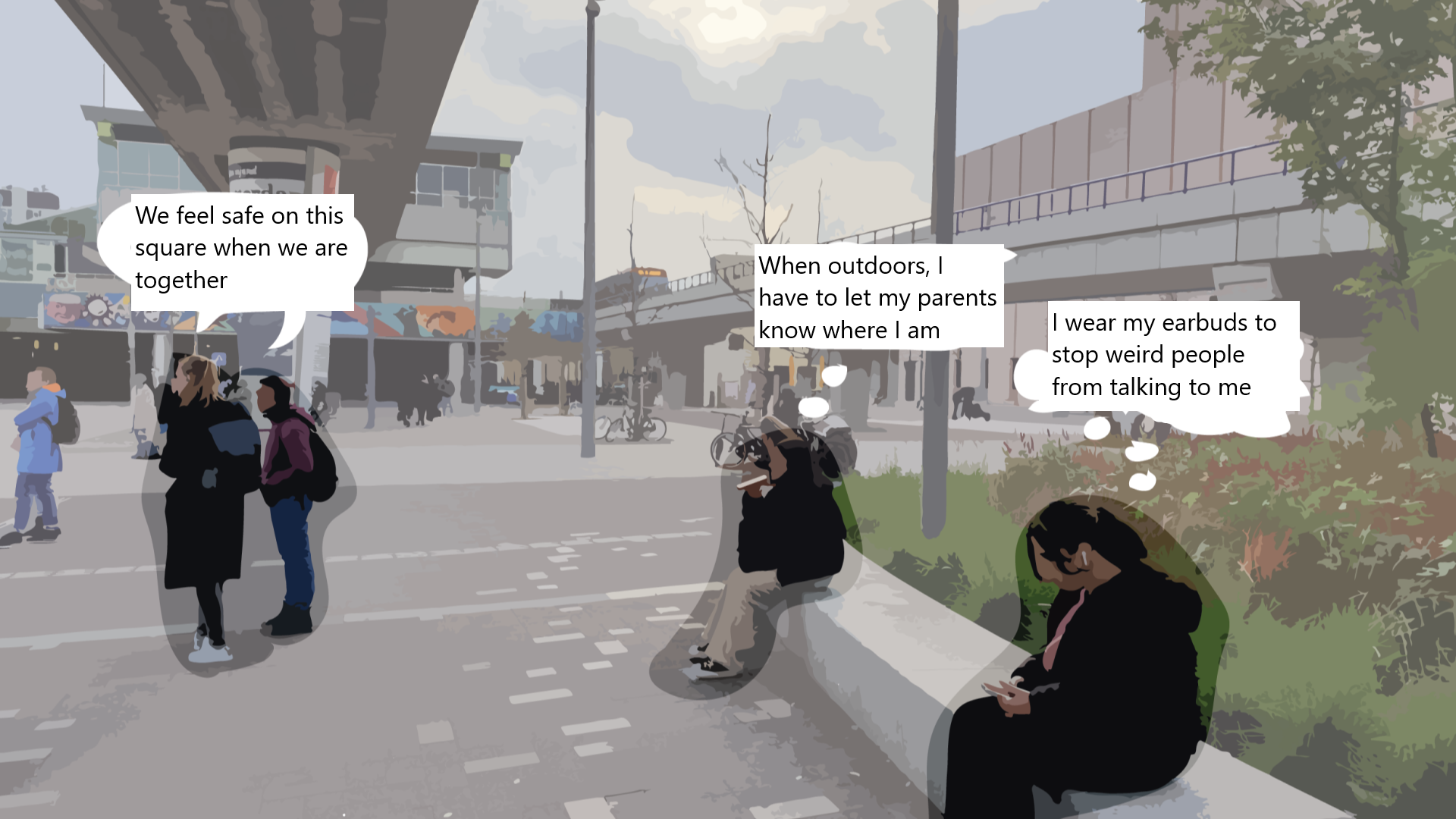
I prefer to wait here for the bus because this is where I have a good overview.
Research participant
Creating collages and pasting stickers
Geertjes next step was co-creation with young women, that is, a critical look at public space design together. "I believe design methods help when discussing abstract issues. Design methods are often visual, which makes them an accessible language." In a private setting, she asked a group of young women to make collages of what is desirable, or not desirable, in public places. She also asked the same question of young visitors to a winter market at Zuidplein, a major public transport hub and shopping centre in Rotterdam South. In this case, she asked the young women to draw their own map of the area and use stickers to indicate where they felt safe or unsafe.
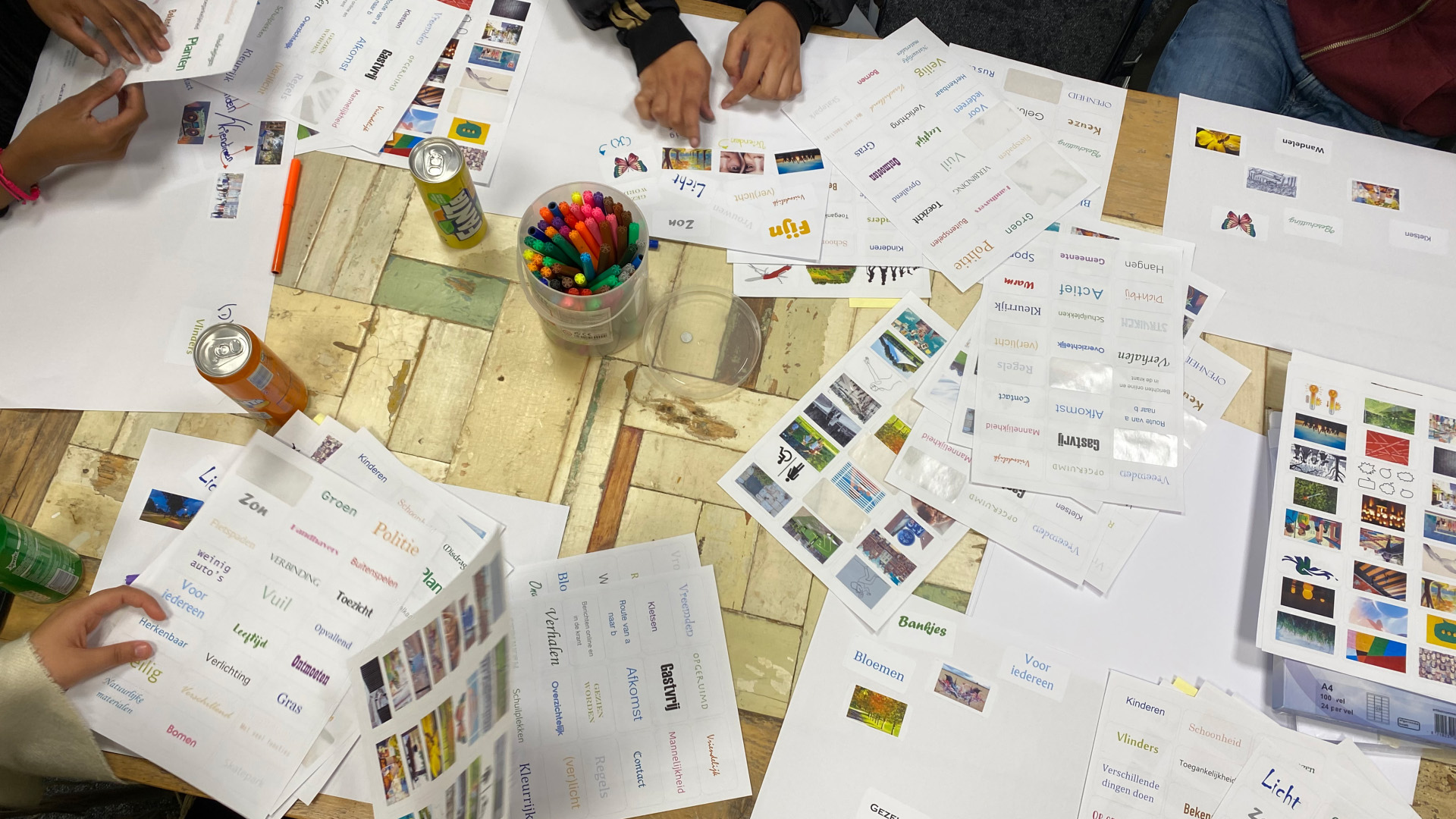
The conclusions of the study are presented in the booklet 'Ruimte voor meiden op Zuid’ (Room for young women in the South). In it, the researchers formulate five design principles for an improved perception of safety:
- Provide multifunctional public spaces for young women (public transport, shopping, playground, green spaces)
- Take their cultural backgrounds into account
- Provide supervision (not police, but 'normal' working people)
- Ensure lines of sight, lighting, and accessibility
- Recognise and support strategies to prevent undesirable behaviour
They also identify two participation principles for future research:
- Take ample time to build relationships or join an existing network
- Immerse yourself in their world, offer them something before asking for their help
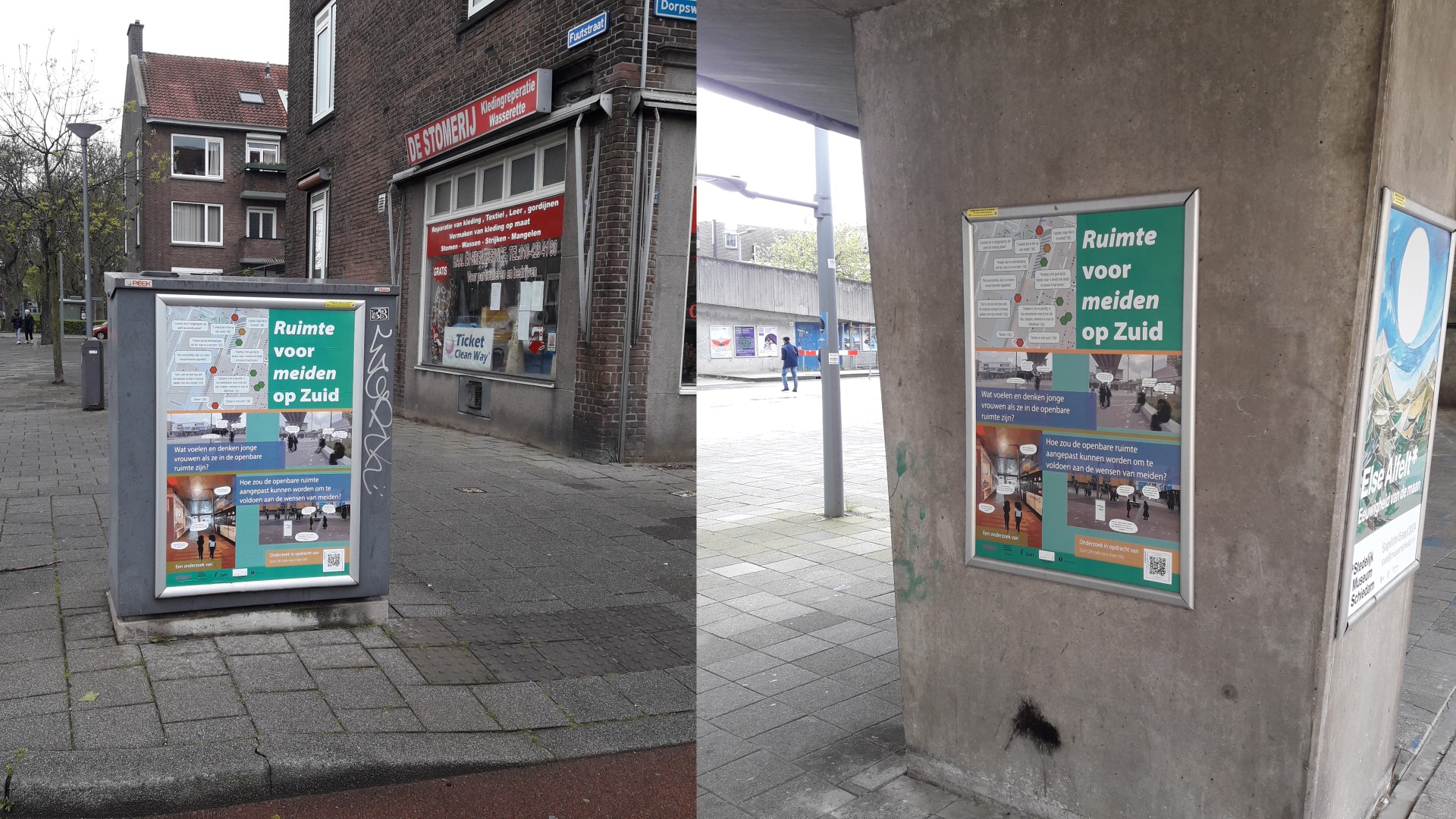
Support and graduates welcome
Many follow-up steps have been taken since the project was completed. The booklet was presented to Rotterdam's director concerning urban development, and the city council debated the outcomes. Geertje designed a poster of the team's findings, which was put up in public places around Zuidplein. There was also a lot of media coverage of the study. Geertje appeared in Trouw and AD, and was interviewed by local broadcasters. And now for the next step: "We have to give young women a voice in urban design! The alderman has already expressed his support, but now we are looking for the funding to carry it out." Meanwhile, the toolkit from her co-creation session is already available online for wider use. "Are you a master's student interested in graduating on this topic? You are most certainly welcome."
More information
The banner is AI-generated. Other images are property of Geertje Slingerland.
The full booklet 'Ruimte voor meiden op Zuid' is available online.
This research was initiated and made possible by Kenniswerkplaats Leefbare Wijken. They have published their own article about this research.
Chicks & The City edited their street interviews into a podcast episode, which is available on all streaming services or on their website.
